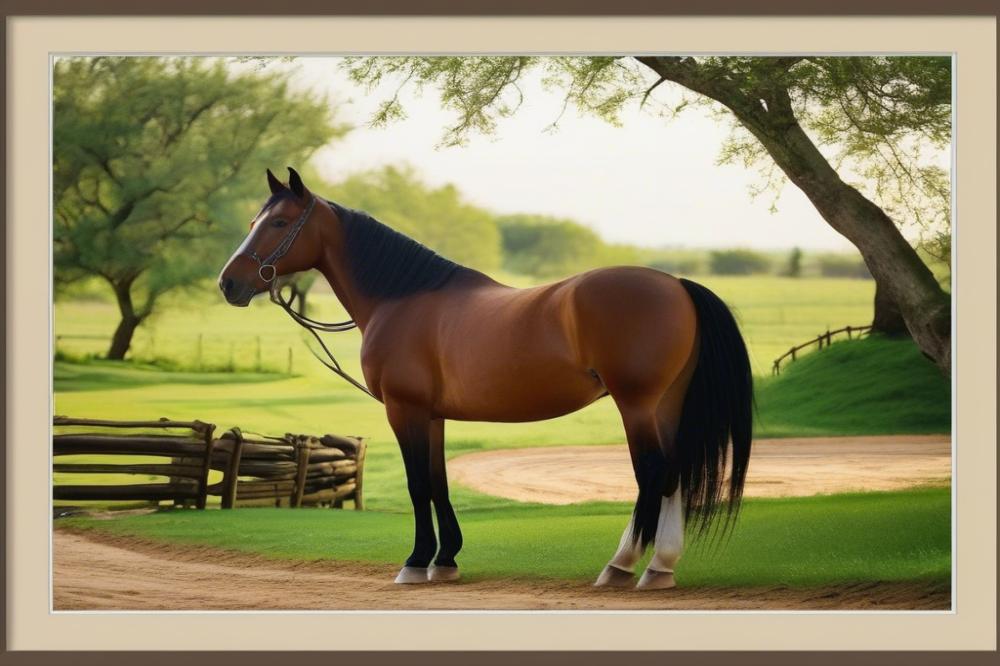Introduction
Ground Tying is a technique where a horse remains in one place without any physical restraint. This practice plays an essential role in horse training programs. It helps develop a horse’s focus and discipline. Additionally, Ground Tying is more than just a method; it enhances the bond between horse and handler. A well-ground-tied horse provides safety and eases handling in various situations.
Within the broader context of training techniques, ground tying fits snugly into groundwork exercises that improve a horse’s responsiveness. Many trainers use groundwork to instill discipline before transitioning to mounted work. Ground tying produces a unique opportunity to teach obedience while building trust. A horse that understands this concept often behaves better when in different environments.
Safety is a critical component when working with horses. Ground tying decreases the chances of accidents that can occur if a horse gets loose. Each moment spent in training reinforces obedience. Consistency in training fosters a sense of reliability between the horse and the handler. Through this practice, horses learn to stay in place, which reduces anxiety for both horse and rider.
Trust building is crucial as well. Horses are not just animals; they are sentient beings capable of forming deep connections. When a horse learns to tie to the ground, it develops confidence in its handler. This bond leads to a more cooperative and calm partner in training sessions. In summary, ground tying establishes a solid foundation in horse training that prioritizes safety, trust, and obedience.
Understanding Ground Tying
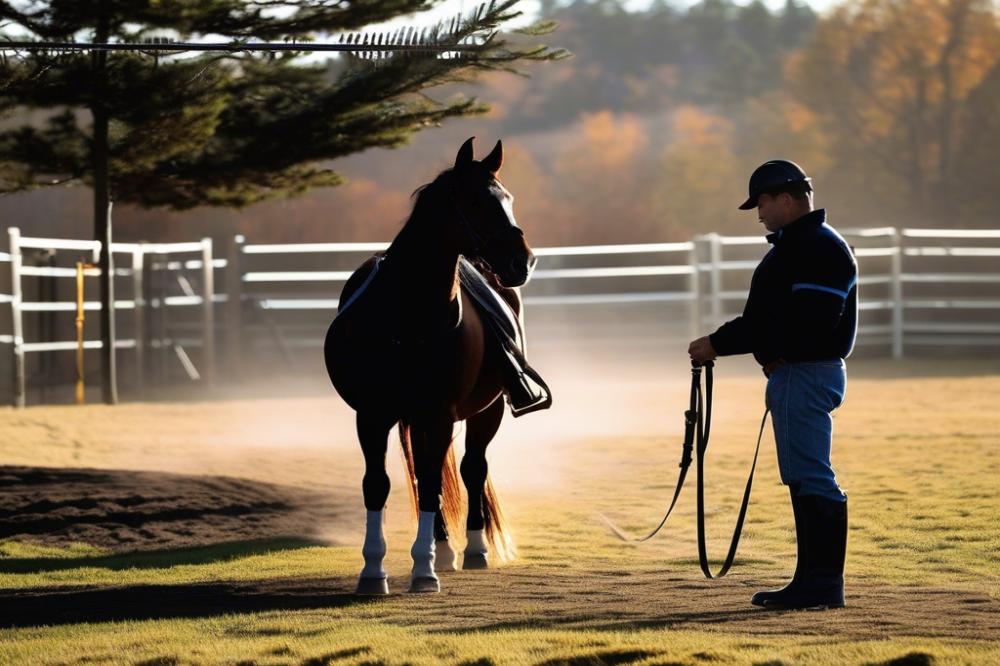
Ground tying is a method of training horses where they learn to remain in one spot without being tethered. Unlike conventional tying methods that use ropes or halters, this approach aims to teach horses to trust their handlers and respect their personal space. This can lead to a more respectful partnership between horse and rider.
Effective communication plays a vital role in this technique. Horses respond to body language and pressure cues, much like how humans interpret gestures. When a horse is trained to ground tie, it learns to be attentive to these signals. As a result, both horse and handler develop a deeper connection.
Through this training, a horse gains a clearer understanding of boundaries. Instead of relying solely on restraints, the animal learns to choose to remain where it is placed. This shift in interaction fosters greater obedience. Horses become more aware of their surroundings while still listening to their handlers.
Ground tying also encourages a sense of confidence in the horse. Animals that understand their boundaries feel more secure in their actions. They can stand calmly, which is necessary for safety during grooming, tacking, and various other situations.
This technique not only benefits the horse but also enhances the handler’s skills. It requires patience and consistency, which can improve handling skills overall. By developing this method, trainers can cultivate a more trusting relationship, leading to better responses in various activities.
Benefits of Ground Tying in Training Programs
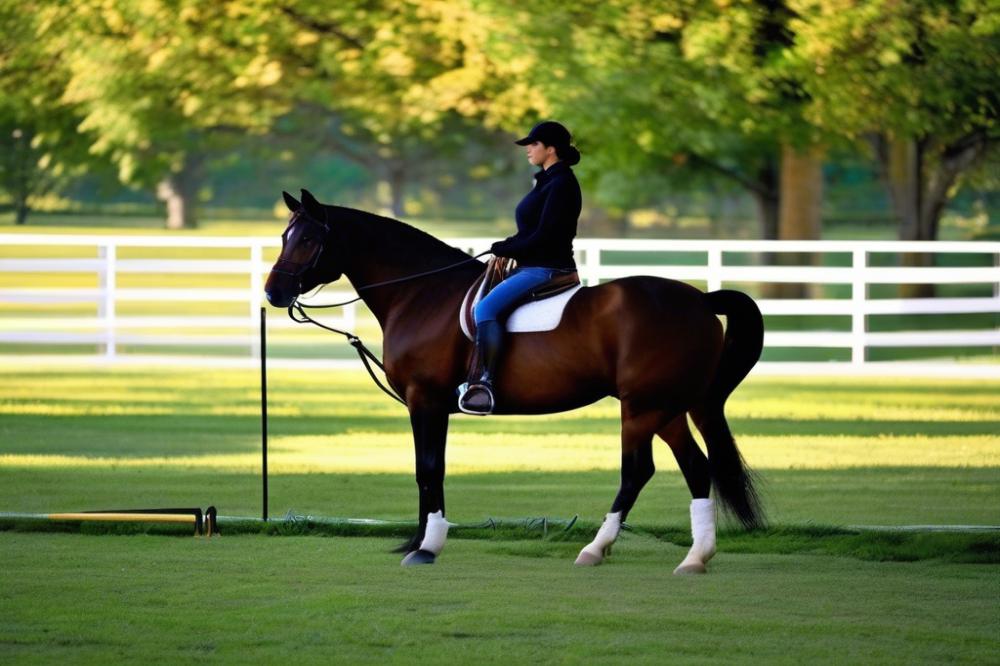
Incorporating ground tying into training programs offers several advantages. Safety is a major concern for both horse and handler. When a horse learns to ground tie, it reduces the risk of accidents. For instance, a horse that stands quietly is less likely to step on someone or pull away unexpectedly. This is especially important in situations where distractions may arise.
Beyond safety, trust plays a significant role in the bond between horse and rider. Teaching a horse to remain still fosters a sense of confidence. The animal learns to understand its handler better. Improvements in behavior often follow. A calmer horse is easier to manage and communicate with, which enhances the overall experience of training.
Additionally, strength in foundational skills develops from this practice. Handlers gain confidence in their abilities to control and work with their horse. Patience becomes essential, as teaching requires time and consistency. As the horse reflects this training, both horse and handler learn valuable lessons about cooperation. These experiences can translate well into other equestrian activities.
Moreover, ground tying reinforces the idea of being attentive. Horses that master this skill often become more responsive to cues. Handlers benefit from this increased attentiveness too. They learn to better read their horse’s body language. Such insights can lead to more effective training sessions.
Ultimately, including ground tying in a training program lays the groundwork for success. The skills acquired through this practice extend beyond the training arena. They contribute to safer and more enjoyable riding experiences. By emphasizing trust and safety, handlers and horses can thrive together.
Ground Tying Techniques and Practices
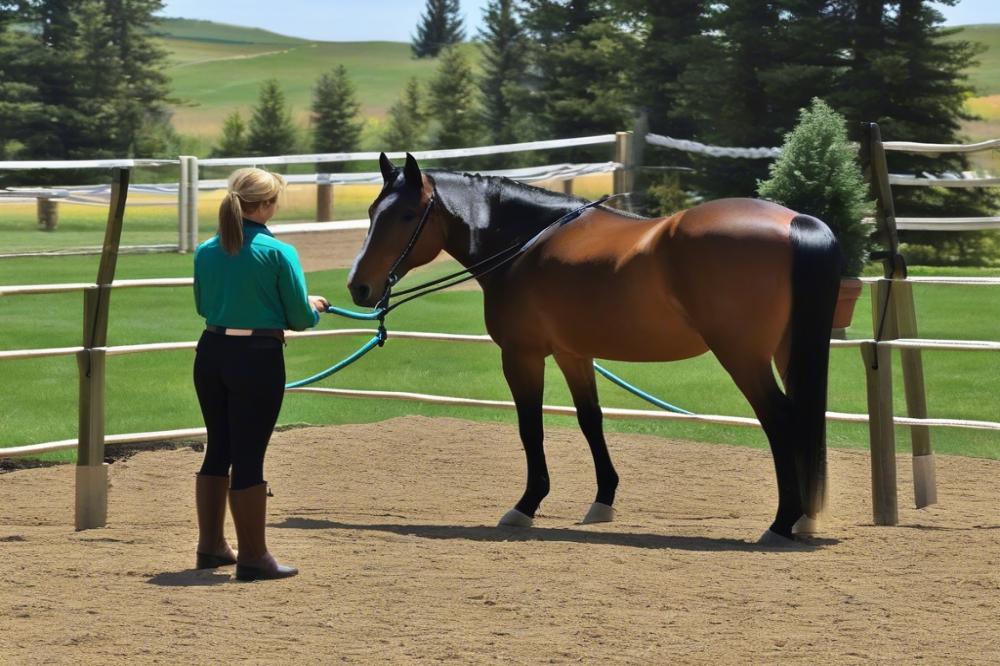
Teaching a horse to stay tied to the ground can be rewarding. The following techniques present a structured approach, making the process more manageable. Understanding each step will guide trainers in achieving success.
Begin by establishing a strong foundation with groundwork exercises. These will help build a bond between you and your horse. Stand in a quiet area, free from distractions. This promotes focus and calmness.
Start with simple leading commands. Use a halter and lead rope. Walk your horse in a straight line, encouraging them to follow closely. Gradually introduce turns and stops. Positive reinforcement, like treats or praise, reinforces good behavior during these exercises.
Once your horse is comfortable leading, introduce the idea of standing still. Position yourself in front of your horse. Ask them to stop while facing you. Gradually increase the time they remain standing. Begin with just a few seconds and slowly extend this duration. Patience is key. Horses need time to understand what you expect.
Next, practice ground tying without the lead rope. Place the horse in a standing position. Use a soft cue, like a gentle nudge or vocal command. Step back a few steps and observe. If the horse moves, calmly bring them back to position. Repeat until they understand to remain in place.
Incorporate distractions as your horse becomes more confident. Use objects or movements to test their ability to stay grounded. Tossing a ball or having another horse walk by can create this environment. Reward your horse for staying put. It builds their confidence and reinforces good habits.
Adapting your training style is essential. Every horse has its learning pace. Adjust your techniques based on their demeanor and responsiveness. Remaining flexible will foster a better understanding. Some horses may require more repetitions than others, so be prepared to vary your approach.
As you continue, consistency becomes vital. Set aside regular practice sessions. Short and frequent training times usually yield the best results. A few minutes each day can be more effective than long sessions filled with frustration.
Finally, maintain a positive mindset. Frustration can hinder your progress and affect your horse’s behavior. Celebrate small victories. Each successful moment contributes to the overall training. Keeping an upbeat attitude helps create a positive learning environment.
Ground tying is about trust and respect. With these techniques and practices, trainers can work toward effective performance. Always remember, patience and consistency lead to long-lasting results.
Common Challenges and Solutions
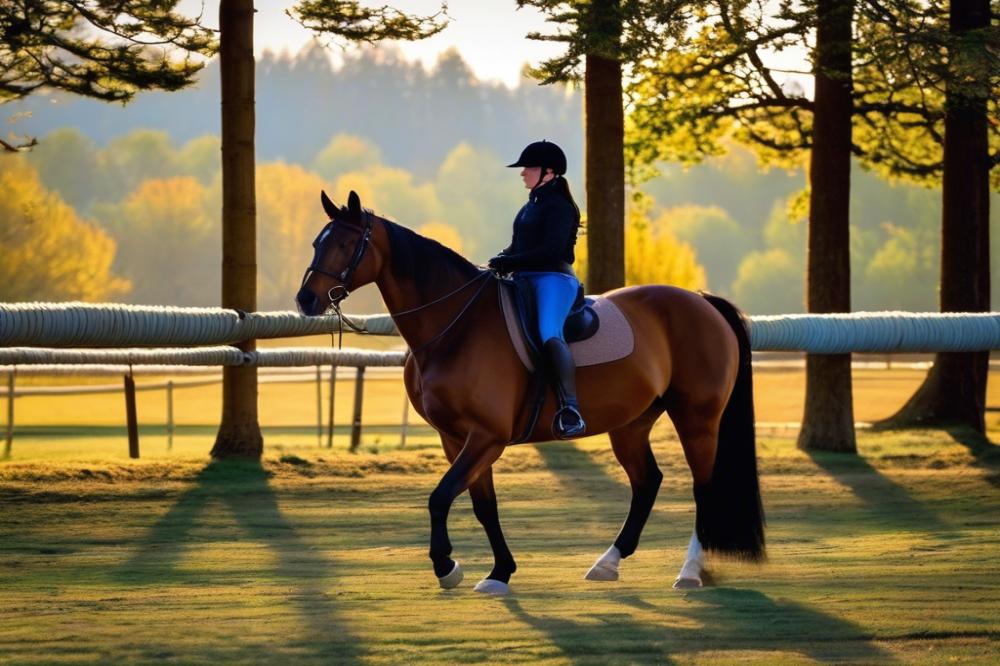
Trainers often face a variety of issues when they start to include ground tying in their training programs. Horses can be unpredictable creatures. One common challenge involves the horse not staying in place. This problem can lead to frustration for both the trainer and the horse. Horses may feel anxious or want to explore their environment. This behavior can disrupt the training process.
A good solution involves building trust. Start with short durations and gradually increase the time spent tying. Use positive reinforcement, such as treats or praise, to reward the horse for standing still. This encourages learning and creates a more relaxed atmosphere. Another tip is to choose a quiet location for practice. Reducing distractions helps horses feel more secure.
Behavioral understanding is also crucial. Horses communicate through body language. Observing their signals can offer insight into their feelings. For instance, a horse that shifts its weight or looks around may be uncomfortable. Being aware of these signs can help trainers adjust their approach.
Another challenge may arise from inconsistency in training techniques. When multiple people interact with the horse, confusion can ensue. Using a consistent method reinforces learning. Setting clear expectations for both the horse and handler aids in this process. Regular practice and clear communication create a foundation for success.
Lastly, some horses might struggle with the concept of being tied. This can lead to resistance or even panic. To ease this, start by teaching the horse to tie in very short sessions, slowly increasing the length. Pair this with a calming presence and gentle guidance. Patience is vital in these situations.
Understanding horse behavior and communication is key in overcoming these challenges. Trainers who are observant can adapt strategies. Different horses may require tailor-made solutions. With a thoughtful approach, incorporating ground tying can become a valuable part of any training routine.
Integrating Ground Tying into Comprehensive Training Programs
Integrating ground tying into a training program can enhance various aspects of horse education. This technique can improve how a horse responds to cues when away from its handler. Incorporating it alongside other training methods can produce a well-rounded animal. Understanding the goals of a training program allows for better planning.
One objective is to improve horse handling. When horses learn to ground tie, they develop patience. A calm animal is easier to manage in several situations. Using ground tying can promote trust between the horse and handler. This trust is vital for effective communication later on.
Another goal may be to boost obedience. Horses that master ground tying learn to focus on their handler, even in distractions. This skill can translate into better performance in other training scenarios. For instance, if a horse remains still during ground tying, it will likely follow commands more readily. Pairing ground tying with groundwork exercises can reinforce these skills.
Diverse training programs utilize ground tying effectively. One effective method mixes groundwork and desensitization. This approach teaches horses to handle various stimuli while remaining calm. By coupling ground tying with exposure to different environments, handlers can build confidence in their horses.
Another example includes integrating it with basic dressage principles. By practicing ground tying before mounting, riders can assess their horse’s calmness. If the horse is content to stand, it sets a positive tone for future lessons. Such preparation aids transition into mounted work smoothly.
Active trainers often utilize ground tying to teach other skills. For example, combining this exercise with lunging can maximize productivity. When horses learn to listen and remain still, they are more receptive to further training. Trainers can use these moments to reinforce good behavior consistently.
Ultimately, a comprehensive training program that includes this technique can lead to significant improvements. Horses that learn patience and follow commands with confidence can perform more effectively. Not only does this promote skill development, but it also fosters a positive relationship between horse and handler. By being dedicated to integrating all training elements, handlers can achieve their goals more efficiently.
Bringing It All Together
The practice of ground tying is an essential aspect of horse training programs. It enhances safety for both horse and rider. When a horse is able to stand still calmly, it reduces the risk of accidents. This skill is particularly valuable in busy environments where distractions are abundant.
Building trust between horse and trainer is another key advantage. Ground tying requires communication and understanding. This relationship promotes a more responsive and reliable horse. Trust is crucial for any successful training regimen.
Moreover, this technique plays a significant role in improving equestrian skills. Handlers learn to read horse behavior more effectively. Groundwork not only teaches horses to be patient but also helps trainers develop their own timing and rhythm in interactions.
Incorporating this practice into training sessions is vital. Trainers should view it as a foundational element rather than an optional exercise. By prioritizing it in their programs, they foster a safe, respectful, and skilled equine partner. Embracing ground tying will lead to more effective and enjoyable training experiences.

